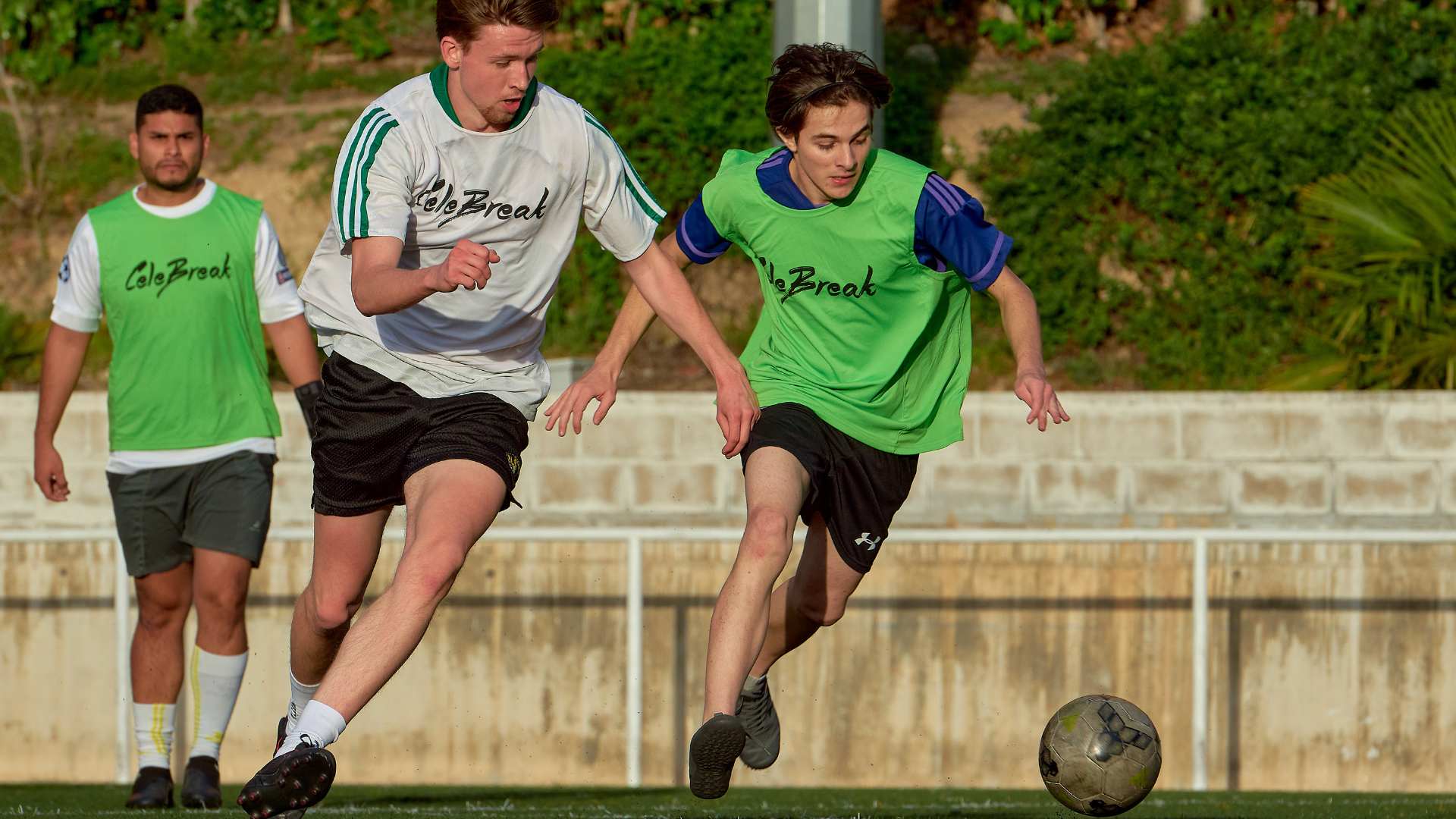Offensive aids in soccer are fundamental tactical principles that every player and fan should understand. It’s not just about individual technical skills but how a player can contribute to the collective success of his team through his movements and decisions on the pitch.
Soccer is a sport that requires a deep understanding of strategy and tactics.
It’s not enough to possess exceptional technical skills; you must also be able to navigate and adapt to changing game circumstances.
Hence, the importance of offensive aids is one of the fundamental tactical elements in soccer.
What are offensive aids in soccer?
Offensive soccer assists are a tactic players use to help their teammates progress down the field and create scoring opportunities.
It is something that goes beyond possession of the ball.
It involves understanding how collective movement, creating space, and distracting opponents can benefit the team as a whole.
Some common forms of offensive help include:
Unmarking: Players move intelligently to break free from defenders and offer themselves as a passing option to their teammates.
The unmarks can be diagonal, deep, or towards the free spaces.
Supports: Those players close to the ball holder offer nearby passing options to maintain possession and build attacking plays.
These supports can be lateral or frontal, allowing the player with the ball to choose the best option.
Blocks: Blocks make it difficult for defenders to mark their teammates, thus creating spaces for them to stand out and receive the ball without opposition.
Overflows and crosses: The wingers or full-backs of the team try to overcome the opposing defenders through dribbling or speed and then send crosses into the box in search of finishers or finishers.
Through Passes: Players send precise passes into space between opposing defenders, allowing a teammate to break free and receive the ball in an advantageous position for the goal.
How offensive aids work in soccer
movement without ball
The key to offensive assists is movement without the ball.
A player can significantly contribute to his team’s attack even when the ball is not at his feet.
By moving intelligently, the player can destabilize the opposing defense, creating space for teammates to advance or receive the ball in favorable positions.
Creation of spaces
Creating space is an essential tactic in offensive assists.
A player can move to an area of the field where there are no opposing defenders, dragging one or more defenders with him and freeing up space for his teammates to take advantage of.
Distraction
Distraction is another basic form of offensive help.
A player may move or gesture that distracts opposing defenders, diverting their attention from other players who could pose a more significant threat.
These moments of distraction can be crucial in creating scoring opportunities.
Importance of offensive aids
Offensive assists are vital in modern soccer because they break down well-organized defenses.
Most soccer teams today devote much of their training to organized defense, so tactics that can disrupt these defenses are essential for offensive success.
Additionally, offensive aids promote team play and collaboration.
It’s not about a player’s skill; it’s about how that player can use their moves and decisions to benefit their team.
Examples of offensive aids in soccer
A classic example of offensive help is a striker’s movement to the field’s flanks to drag down central defenders and free up space in the center for an advancing midfielder.
Another example is when a player performs a free movement, pretending to receive a pass to distract defenders and allow another teammate to receive the ball in a favorable position.
Develop offensive assist skills.
Understanding and practicing offensive assists is crucial for any player who aspires to play at a high level.
Here are some ways to do it:
Observe and analyze matches.
Watching high-level matches and analyzing tactics is a great way to learn.
Watch the players when they don’t have the ball and see how their movements affect the opposing team’s defense.
Training movements without the ball
Movement training without the ball should be integral to any soccer training routine. This may involve running drills, run-off drills, and space-creation drills.
Team play
Fostering team play and collaboration is essential. Make sure you understand that soccer is a team sport and that your team’s success is more important than your individual success.
Frequently asked questions about offensive aids in soccer.
What is the relationship between offensive assists and set pieces?
Set pieces like free and corner kicks are ideal times to use offensive aids. Players can move to create space, distract defenders, and allow their teammates scoring opportunities.
How can the goalkeeper participate in offensive aids?
Although his primary function is to defend, the goalkeeper can also contribute offensive aids, especially in counter-attack situations. His long, precise passes can initiate quick offensive transitions and unbalance the opposing defense.
Do coaches have any role in offensive assists?
Yes, coaches play a crucial role in designing tactics incorporating offensive assists and teaching their players how to execute them effectively. Coaches can also make tactical adjustments during games to maximize the effectiveness of offensive assists.
How do offensive assists relate to the team’s style of play?
The team’s playing style can influence how offensive assists are used. For example, groups that prefer a possession style can use offensive assists to move the ball quickly and unbalance the opposing defense. On the other hand, teams that prefer a more direct style of play can use offensive assists to create space and generate quick scoring chances.
Are offensive assists essential in all positions?
Yes, offensive assists are essential at every position on the field. All players can contribute to offensive assists, from defenders to forwards, through their moves and decisions. However, how each position contributes can vary depending on the team’s tactical system.
Conclusion
Mastery of offensive assists can be the difference between good and great players.
With time, practice, and a clear understanding of this tactical principle, any player can improve their offensive contribution and become a valuable asset to their team.
With CeleBreak, you can practice offensive assists in soccer and much more.
CeleBreak is an application available for the iOS and Android operating systems.
Register with your Facebook account or use the link on the website.
You can choose your favorite type of soccer, female, male, or fun mixed soccer, and enjoy any of the different soccer experiences.
From training sessions, regular matches, and private sessions to Oliver and Veo with the support of electronic devices that measure and record performance.
Download and play!



